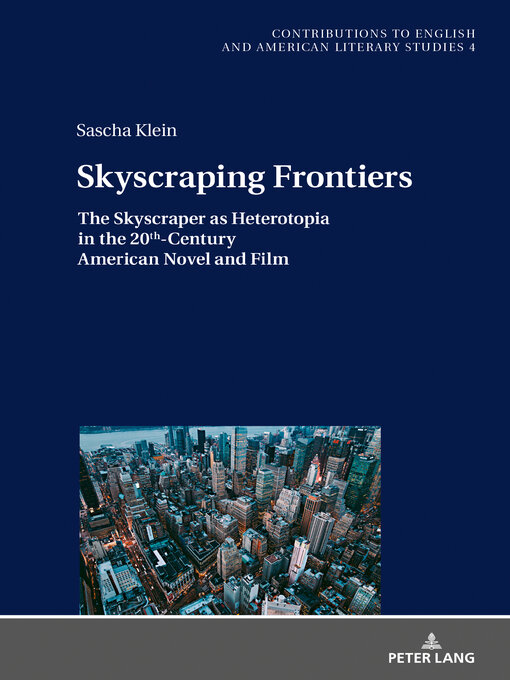As a space of extremes, the skyscraper has been continually constructed as an urban frontier in American cultural productions. Like its counterpart of the American wilderness, this vertical frontier serves as a privileged site for both subversion and excessive control. Beyond common metaphoric readings, this study models the skyscraper not only as a Foucauldian heterotopia, but also as a complex network of human and nonhuman actors while retracing its development from its initial assemblage during the 19th century to its steady evolution into a smart structure from the mid-20th century onward. It takes a close look at US-American literary and filmic fictions and the ways in which they sought to make sense of this extraordinary structure throughout the 20th and early 21st centuries. More traditional poststructuralist spatial theories are connected with concepts and methods of Actor-Network Theory in a compelling account of the skyscraper's evolution as reflected in fictional media from early 20th-century short stories via a range of action, disaster and horror films to selected city novels of the 1990s and 2000s.
- British Science Fiction Association awards
- Book of the Year
- International Booker Prize
- 2025 Women's Prize for Nonfiction
- The Arthur C. Clarke Award
- Uplifting Reads to Kickstart Your Year
- Bestsellers of 2024
- Nero Book Awards
- Great Reads from Around the World
- THE POLARI PRIZE
- World Poetry Day
- International Women's Day
- Business Book of the Year 2024
- See all ebooks collections
- World Cancer Day
- International Day of Women and Girls in Science
- Magazines
- World Photography Day
- See all magazines collections
